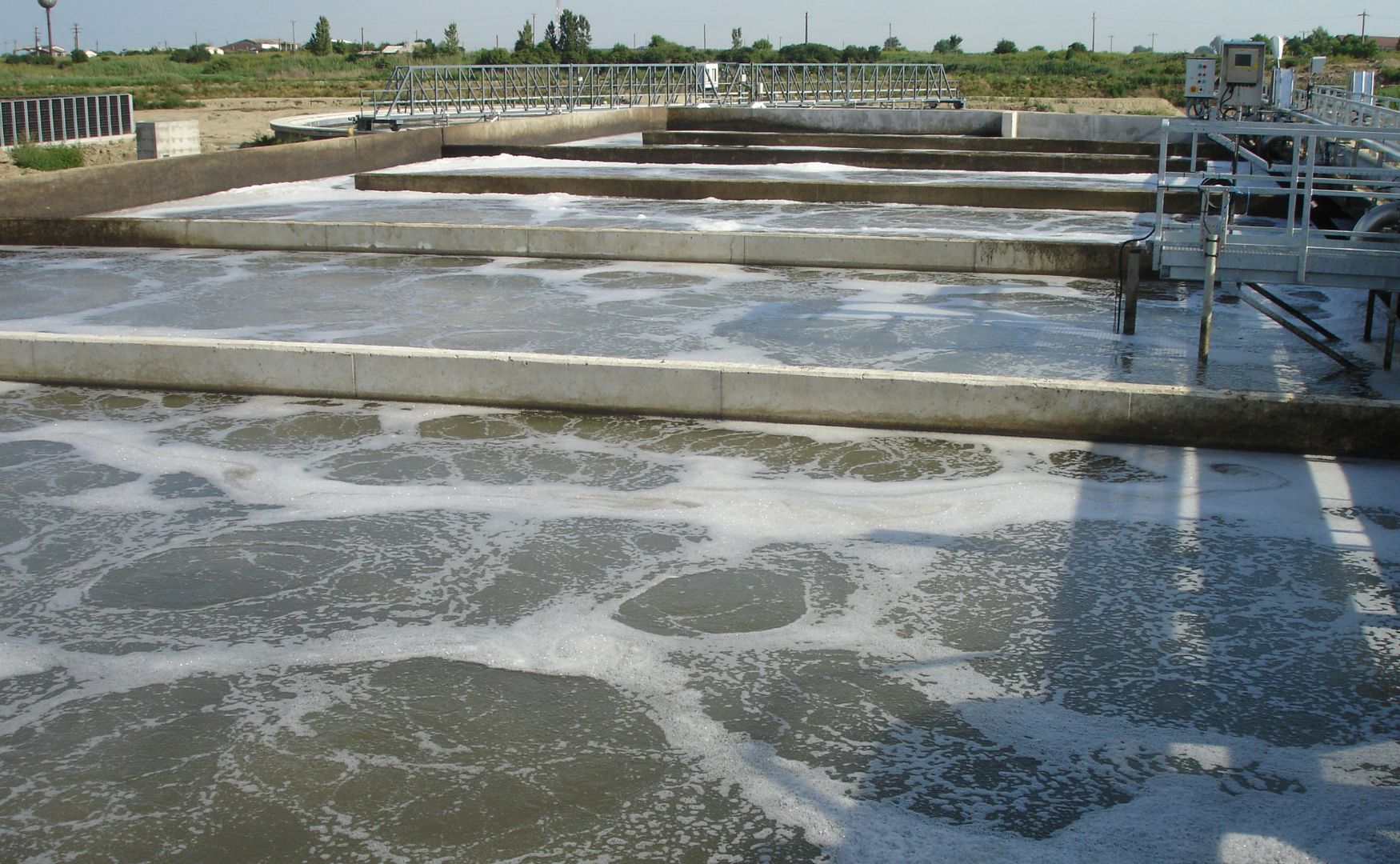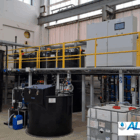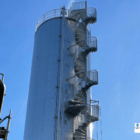In water and wastewater technology, floating sludge refers to the accumulation of light, poorly degradable organic and inorganic particles that float to the surface of clarifiers or reactors due to their low density. It is caused by an imbalance in the treatment process and can significantly impair the efficiency of wastewater treatment plants and industrial water treatment systems.
Table of contents
Causes for the formation of floating sludge
The formation of floating sludge is a complex phenomenon that is influenced by various factors:
Excessive growth of filamentous bacteria
- Filamentous bacteria (e.g. Nocardia, Microthrix parvicella) form filamentous structures that lead to the formation of stable foam and floating sludge blankets.
- Causes for the growth of filamentous bacteria:
- Nutrient imbalance: High concentrations of organic substances, nitrogen or phosphorus.
- Oxygen deficiency: Low dissolved oxygen concentrations promote anaerobic conditions.
- Temperature: Optimal growth conditions for filamentous bacteria are 10-25 °C.
Release of gases
- Denitrification in secondary clarification:
- Formation of nitrogen gas bubbles (N2) due to incomplete denitrification leads to the floating of sludge flocs.
- Anaerobic decomposition:
- Formation of methane (CH4) and carbon dioxide (CO2) by anaerobic microorganisms when there is a lack of oxygen.
Surface-active substances (surfactants)
- Surfactants from industrial processes or household wastewater can reduce the surface tension of the water and promote foaming.
Hydrophobic substances
- Fats, oils and waxes:
- Poorly degradable lipophilic substances that float on the water surface.
- Hydrophobic particles:
- Fine particles that do not sediment due to their surface properties.
Effects of floating sludge
The floating sludge can cause considerable operational and environmental problems:
Impairment of the cleaning performance
- Reduced settling properties:
- Floating sludge disrupts sedimentation in the secondary clarifier, which leads to increased solids concentrations in the effluent.
- Return sludge systems:
- Floating sludge can be returned to the aeration tank and impair biological activity.
Malfunctions
- Blockages:
- Accumulation of floating sludge in overflows, pumps and pipes.
- Foam formation:
- Overflowing pools can lead to overflows and environmental pollution.
Environmental pollution
- Increased COD and BOD value:
- Inadequately treated wastewater pollutes receiving waters and bodies of water.
- Odor nuisance:
- Anaerobic decomposition processes in the floating sludge lead to the formation of odorous gases such as hydrogen sulphide (H2S).
Diagnosis and analysis of floating sludge
Effective treatment requires precise identification of the causes:
Microscopic examination
- Identification of filamentous bacteria:
- Determination of the dominant species using staining techniques (e.g. Gram staining).
- Assessment of the sludge floc structure:
- Analysis of flake size, density and stability.
Chemical analyses
- Determination of nutrient concentrations:
- Measurement of ammonium, nitrate, phosphate and organic carbon compounds.
- Oxygen content:
- Continuous monitoring of dissolved oxygen in the aeration tank and secondary clarifier.
Process parameters
- Mud age:
- A sludge age that is too high promotes the growth of slow-growing filamentous bacteria.
- Sludge index (SVI):
- A high SVI value (>150 mL/g) indicates poor settling properties.

Photo: Our ALMA BHU BIO activated sludge tank for the treatment of organically contaminated wastewater
Effects of floating sludge
Floating sludge can have a significant negative impact on water and wastewater treatment:
Malfunctions:
- Blockages in pumps, overflows and drains due to floating sludge.
- Increased maintenance and cleaning requirements.
Reduced cleaning efficiency:
- Floating sludge can impair the clear water zone in secondary clarifiers and lead to increased solids concentrations in the effluent.
- This increases the chemical oxygen demand (COD) and the turbidity of the purified water.
Hygienic risks:
- Pathogenic microorganisms in floating sludge can impair water quality and violate environmental regulations.
Odor problems:
- Organic substances and gases such as hydrogen sulphide (H2S\text{H}_2\text{S}H2S) in the floating sludge can cause unpleasant odors.
Treatment and prevention of floating sludge
Mechanical removal
Skimmer:
- Use of floating sludge skimmers or special skimming devices that suck the sludge from the water surface.
- Mechanical scrapers on the pool surface transport the floating sludge to separate disposal areas.
Screen filter:
- Fine screens can separate fat and oil components before biological treatment.
Process optimization
Control of gas formation:
- Reduction of the denitrification rate in the secondary clarifier by controlling the return sludge concentration.
- Optimization of aeration in the aerobic reactor to limit denitrification to the main biological reactor.
Improvement of the sludge floc properties:
- Ensuring a balanced nutrient ratio (carbon, nitrogen, phosphorus in a ratio of 100:5:1).
- Avoidance of toxic substances that could interfere with flake formation.
Chemical measures
Defoamer:
- Addition of anti-foaming agents to reduce surface foam and floating sludge.
- Use of organic polymers or silicone emulsions.
Precipitant:
- Dosing of iron or aluminum salts to bind fats and oils and improve the settling behavior of the sludge.
Pre-treatment of grease and oil components
- Grease separator:
- Separation of fats and oils from the raw wastewater prior to biological treatment.
- Use in industrial operations such as food processing or gastronomy.
Secondary clarification and sludge management
Return sludge control:
- Adjustment of the return sludge volume and retention time in the secondary clarifier to minimize denitrification.
Sludge dewatering:
- Regular removal and dewatering of excess sludge to reduce the load on the system.
Conclusion
Floating sludge is a common problem in industrial and municipal water and wastewater treatment caused by physical, chemical and biological influences. Its efficient control and treatment requires a combination of preventive measures, mechanical removal and process optimization. Technologies such as grease traps, flotation systems and innovative biological approaches can help to minimize the formation of floating sludge and maximize the efficiency of water treatment. A sound understanding of the causes and appropriate countermeasures are crucial to avoid disruptions and environmental problems.
For further information on our products, please feel free to contact us at any time!








